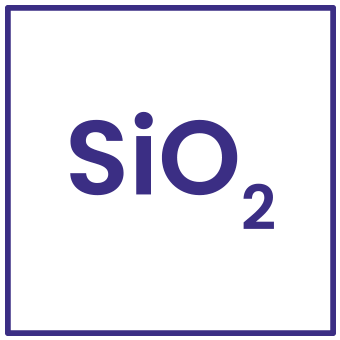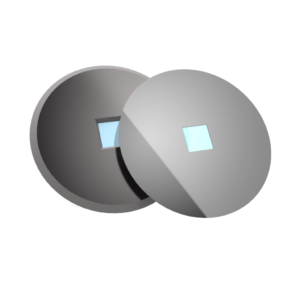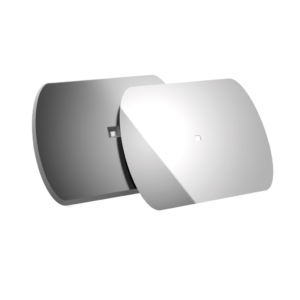Environmental & Materials Science
Substrates for Transmission Electron Microscopy
Grids for TEM that will enhance the quality of your research processes and results
We offer a large array of silicon-based Cryo EM grids, TEM grids, lift-out grids, calibration specimens, and TEM grid accessories to help you perfectly characterize your samples. Explore popular applications for our grids for TEM and get recommendations on which product is right for your needs.
Cryo-Electron Microscopy
Our Cryo EM grids include Silicon Nitride alone or with unique carbon coatings to provide superior bridging and maximum observable specimen sites of organic and biologic solutions and suspensions.
High resolution imaging
We offer the thinnest Silicon and Silicon Nitride TEM windows on the market enabling atomic-level resolution.
- Our 5nm amorphous silicon TEM windows are less prone to elastic scattering than alternative technologies
- Long two slot 50 X 1500 micron windows enable high angle electron tomography imaging
- Microporous and nanoporous silicon nitride permit free suspension of deposited material for background-free imaging
- Plasma cleanable for removal of organic contaminants
Microplastic Capture & Analysis
Sample deposition
SiMPore TEM Grids can act as a robust substrate on which to deposit materials or grow nanoparticles or nanowires.
The best products for sample deposition are:
- 10, 20 & 50 nm thick Silicon Nitride TEM Grids are our most robust, flat, and plasma cleanable substrates for demanding sample preparation procedures
- 15 nm thick Pure Silicon TEM Grids are our most robust pure silicon films; these amorphous films offer plasma cleanability, tunable surface hydrophobicity, and the ability to analyze for nitrogen and carbon without background signals
- 20 & 40 nm thick Silicon Dioxide TEM windows offer an ideal surface for high-temperature nanomaterial growth of specimens
- Aperture frames with large openings allow deposition of custom films for background-free imaging
Focused ion beam sample preparation
We offer a unique, half-grid shape with a free edge silicon nitride window.
- The free edge silicon nitride window provides greater experimental flexibility and easier sample preparation
- Ready to use four-point gold contacts for lamella electrical biasing
Calibration specimens
We offer a suspended germanium layer providing a unique calibration standard to ensure optimal microscope performance when studying electron microscopy sciences.
- Our microporous silicon nitride is uniformly deposited with a germanium (Ge) film for detector energy axis and energy resolution calibration
- Since Ge is not typically found in TEM columns, our calibration samples provide a material that cannot be mistaken for instrument components’ signal peaks
Our TEM Grid Materials
Our silicon nitride, silicon dioxide, and pure silicon TEM Grids enable researchers to characterize their samples and meet a variety of application-specific research needs.

Silicon Nitride
Ideal for temperatures > 1000°C
Silicon nitride grids are well-suited for use in environmental TEMs where dynamic processes are observed at high temperatures.
Flat and uniform surface
Silicon nitride grids incorporate LPCVD, low-stress (~250MPa), non-stoichiometric silicon nitride which provides uniformly flat, insulating, and hydrophobic surfaces.
Made for stable imaging
Nanoporous and microporous silicon nitride grids support stable suspension of nanoscale materials for imaging without a background.

Pure Silicon
Increases stability
Pure silicon grids offer greater stability at high beam currents and at moderately high annealing temperatures (up to 600°C).
Enables alternative for elemental analysis
Pure silicon grids enable elemental analyses by EDAX and EELS of samples containing nitrogen and/or carbon due to their composition and their minimal background signal.
Reduces chromatic blur
Compared to carbon grids, pure silicon grids have half the chromatic blur.

Silicon Dioxide
Created with stoichiometric silicon dioxide
Silicon dioxide grids offer the ability to analyze for nitrogen by elemental analyses such as EDAX and EELS.
Capable of withstanding harsh conditions
Silicon dioxide is able to handle harsh deposition and chemical conditions by providing an ideal balance of imaging resolution and mechanical strength.

Cryo-SiN
Greater contrast
Research findings indicate that viral particles prepared on Cryo-SiN exhibit greater contrast in comparison to those prepared on holey carbon films under the same conditions.
Less imaging
It is significantly easier to calculate 3D reconstructions of viral particles when they’re prepared on Cryo-SiN, as they require only a fraction of the images required for samples prepared on holey carbon films.
Shop Cryo EM Grid & TEM Grid Products
-
TEM Pure Silicon Grids – Two Slot Windows$489.25
-
TEM Silicon Nitride Grids – Single Window$185.40 – $386.25
-
TEM Aperture Grids$144.20


